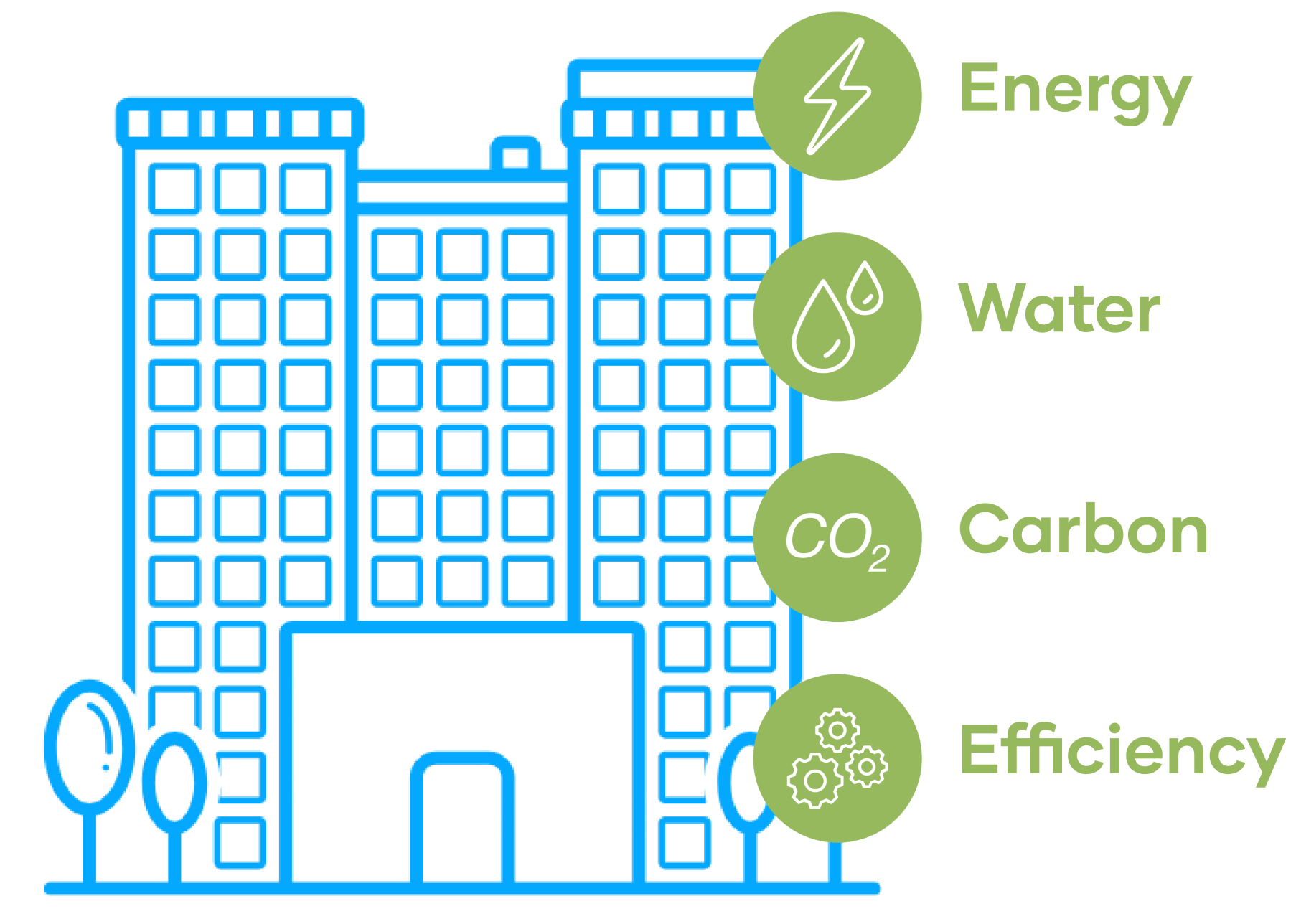
The Center for Building
Performance Standards.
Policy Makers across the country are using the power of building performance standards to improve building efficiency while reducing energy costs and cutting carbon emissions.
The Center for Building Performance Standards is a platform to collect and centralize resources relating to building performance standards to help policymakers, building owners, and contractors navigate the this new policy type.
What Are Building Performance Standards?
Building Performance Standards are a type of policy that require the owners of public, commercial, and large multifamily buildings to improve their performance over time. A BPS typically operates in multi-year cycles to promote long term continuous improvement where every cycle requires owners to achieve greater and greater levels of efficiency.
A BPS, which impacts existing buildings works in tandem with building energy codes for new construction to improve the overall performance of the building stock.
A BPS, which impacts existing buildings works in tandem with building energy codes for new construction to improve the overall performance of the building stock.
Read More


Featured Resources

Resources for the Future
Leading by Example: Building Performance Standards for Decarbonizing Federal Buildings
This report considers the options for implementing a building performance standard across a broader scope of buildings and geography than a single city or state: federally owned or leased buildings, which comprise 1 billion square feet across the country.
View Resource

C40 Knowledge
Toronto's Green Will Initiative: Driving climate action in private commercial buildings
The Green Will Initiative creates a coalition of commercial building owners, propoerty managers and other stakeholders who are committed to addressing greenhouse gas emissions in Toronto's buildings.
View Resource

Asset Score
This tool assesses the energy efficiency of a building’s physical systems and produces an Energy Asset Score report.
View Resource
Building Performance Standards for a sustainable future.
Every year, more jurisdictions, (states, counties, cities, towns) adopt aggressive carbon reductions goals to mitigate the effects of climate change. While building energy codes dictate the level of performance in new construction, existing buildings account for a larger percentage of emissions.
In the United States existing buildings represent 40% of the country’s carbon emissions. 80% of the buildings in existence today will still be in operation in 2050. A BPS provides policy makers with a way to improve their building stock and meet GHG targets. Before building performance standards there was no pathway for policy makers to reduce carbon emissions from this sector.
In the United States existing buildings represent 40% of the country’s carbon emissions. 80% of the buildings in existence today will still be in operation in 2050. A BPS provides policy makers with a way to improve their building stock and meet GHG targets. Before building performance standards there was no pathway for policy makers to reduce carbon emissions from this sector.

Building performance standards for
Carbon Reduction
Existing buildings account for 40% of the country's carbon emissions. A BPS promotes long term planning to set buildings on a glide path to net zero.
Building performance standards for
Increased Efficiency
Efficient buildings have reduced operating costs, better air quality, and are often more comfortable. Efficient buildings are more resilient and able to better withstand extreme weather events like heat waves, and cold snaps.


Building performance standards for
Workforce Development
A BPS spurs job creation as a result of the demand for efficiency and decarbonization projects to comply with the standard.
Tangible benefits for all parties.
For the policy maker, a BPS is a key pathway to meeting greenhouse gas reduction goals but the benefits go beyond government targets. A BPS will spur demand for energy efficiency technologies and building upgrades which in turn will create demand for a workforce to install and perform them.
For the building owners and tenants, High performing buildings have a number of benefits. They use less energy and cost less to operate, they burn less fossil fuel and create better indoor and outdoor air quality, and they improve comfort by keeping temperatures and humidity constant.
A building performance standard sets a jurisdiction on the path to improving the baseline of building performance for the benefit of the owners, tenants, and public.
For the building owners and tenants, High performing buildings have a number of benefits. They use less energy and cost less to operate, they burn less fossil fuel and create better indoor and outdoor air quality, and they improve comfort by keeping temperatures and humidity constant.
A building performance standard sets a jurisdiction on the path to improving the baseline of building performance for the benefit of the owners, tenants, and public.
Tenants
Whether they be residential or commercial, tenants will live and work in cleaner, healthier buildings with lower energy bills. Energy efficient buildings reduce temperature and moister fluctuations which can cause health issues. On top this, studies have found an increase in productivity of workers employed in an energy efficient building.
Building Owners
Efficiency upgrades can increase the value of a property making them worthwhile investments. If a building owner pays for the utilities they will benefit from the reduced bills.
Policy Makers
Policy Makers can use a BPS to achieve carbon reductions goals as well raise the level of performance of their buildings to support the comfort, health, and safety of their residents.
Contractors
A BPS will accelerate the demand for building improvement projects. A BPS will create well-paying clean energy jobs such as weatherization specialists, HVAC technicians, electricians, plumbers and energy auditors.

Easily manage and analyze building performance and benchmarking data with BEAM.
BEAM is a tool that aggregates benchmarking data and is capable of performing automatic compliance tracking based on a jurisdiction’s specific benchmarking or building performance standard policy.
Learn More




